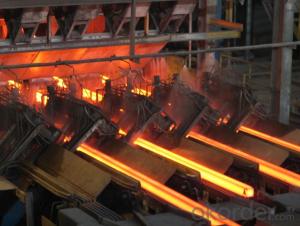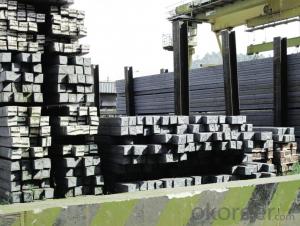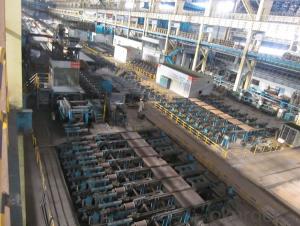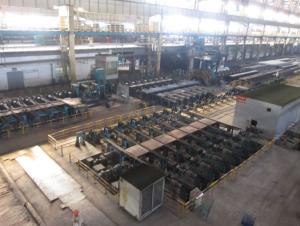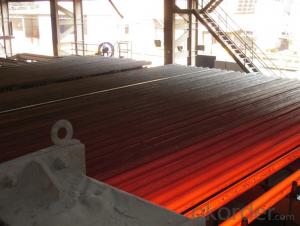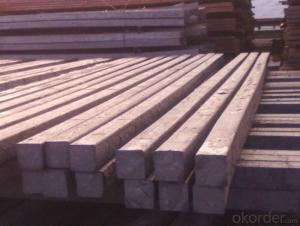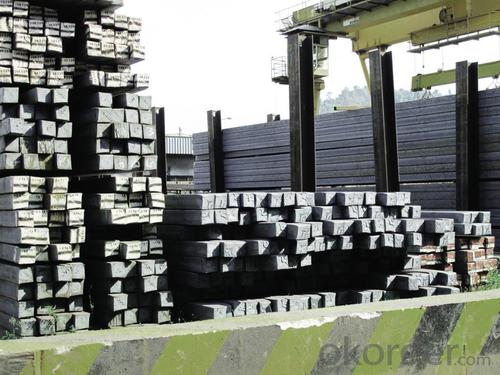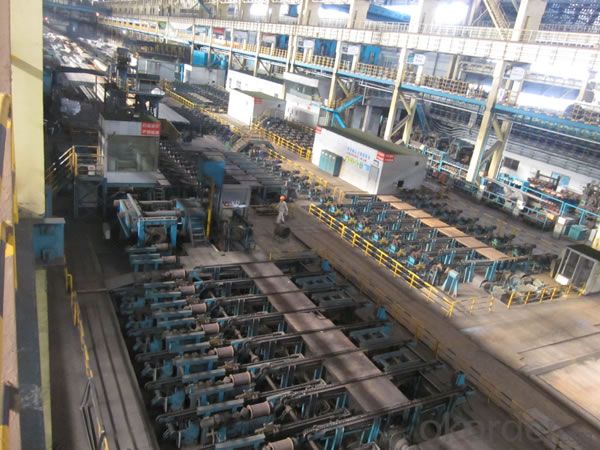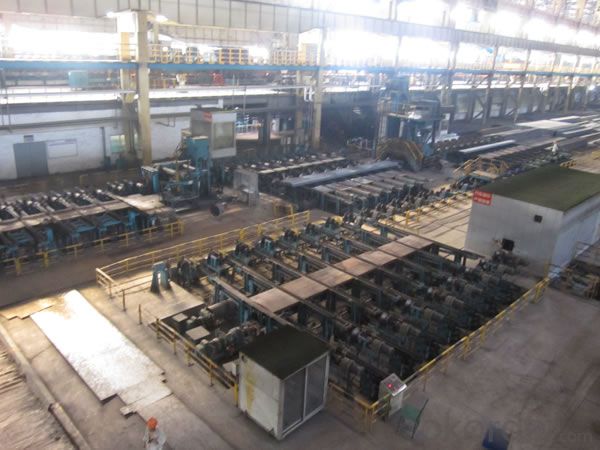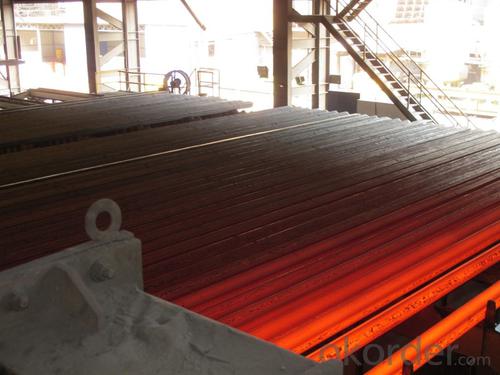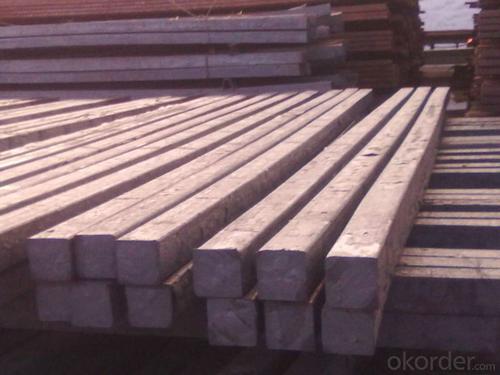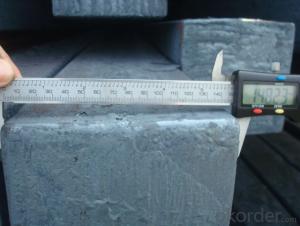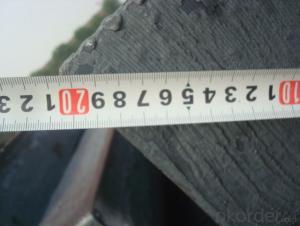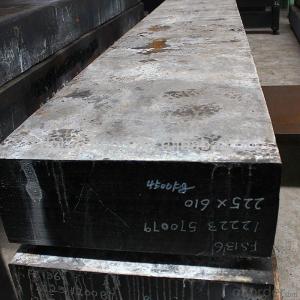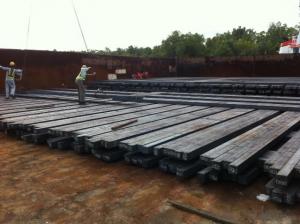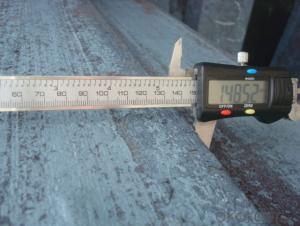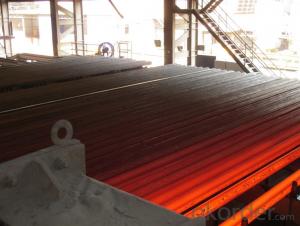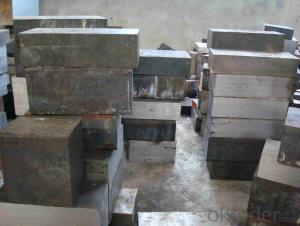Hot Rolled Square Steel Billet 3SP Standard 105mm
- Loading Port:
- Shanghai
- Payment Terms:
- TT OR LC
- Min Order Qty:
- 2000 m.t.
- Supply Capability:
- 10000 m.t./month
OKorder Service Pledge
OKorder Financial Service
You Might Also Like
Structure of Hot Rolled Square Steel Billet 3SP Standard 105mm
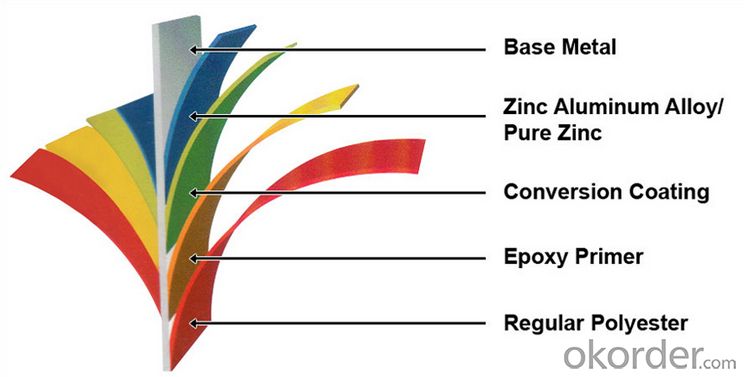
Description of Hot Rolled Square Steel Billet 3SP Standard 105mm
PPGI is made by cold rolled steel sheet and galvanized steel sheets as baseplate, through the surface pretreatment (degreasing, cleaning, chemical conversion processing), coated by the method of continuous coatings (roller coating method),
and after roasting and cooling. Zinc coating: Z60, Z80, Z100, Z120, Z180, Z275, G30, G60, G90
Alu-zinc coating: AZ60, AZ80, AZ100, AZ120, AZ180, G30, G60, G90
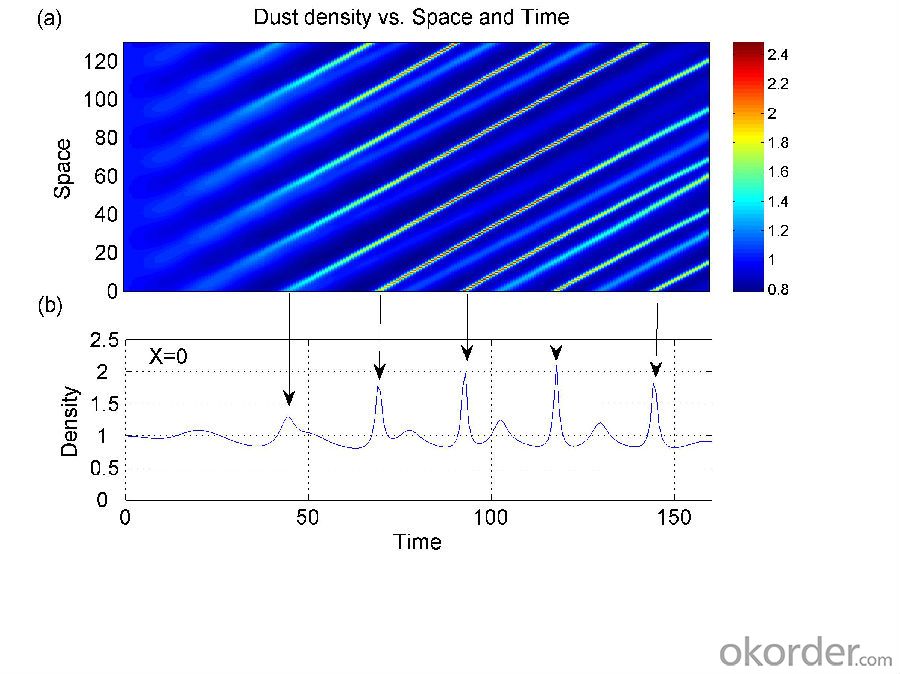
Main Feature of Hot Rolled Square Steel Billet 3SP Standard 105mm
1) Excellent corrosion resistance: The zinc layer provides a good protection of Pre-painted Galvanizeed Steel Sheet.
2) High heat resistance: The reflective surface of the material aids in efficiently reflecting the sunlight away and in turn reducing the amount of heat transmitted. The thermal reflectivity converts into energy savings.
3) Aesthetics: Pre-Painted Galvanized steel sheet is available in plethora of patterns and multiple sizes as per the requirements that given by our customers.
4) Versatility: can be used in the various areas.Standard seaworthy export packing: 3 layers of packing, inside is kraft paper, water plastic film is in the middle and outside GI steel sheet to be covered by steel strips with lock, with inner coil sleeve.
Applications of Hot Rolled Square Steel Billet 3SP Standard 105mm
1) Automotive bodies: filters, fuel tanks, etc.
2) Construction materials: roofings, welding pipes,
3) Electric and electronic appliances: computer cans, etc.
4) Steel cans: containers, etc.
5) Steel furniture: washing machines, refrigerators, microwaves, etc.
6) Drums
7) Office equipment: printer, recorders, etc.
8) Motors and transformers
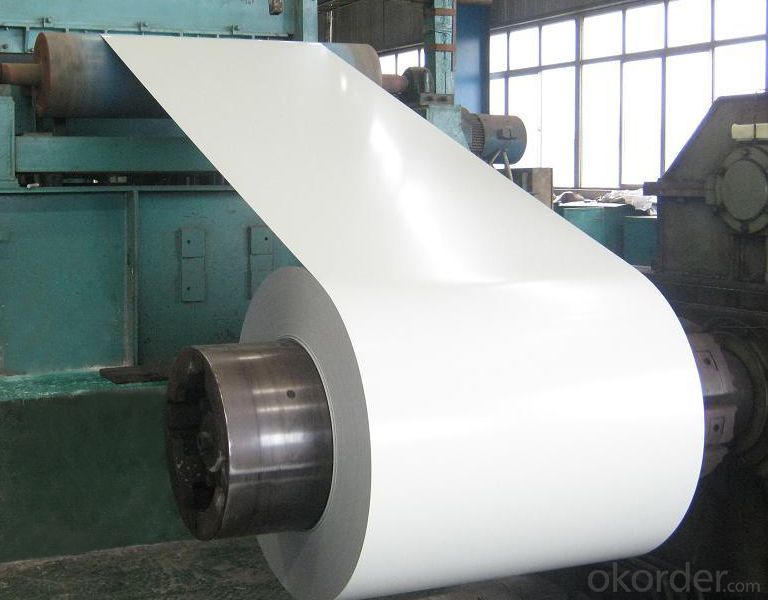
Specifications of Hot Rolled Square Steel Billet 3SP Standard 105mm
| Classified symbol | Yield Point Minimum N/mm2 | Tensile Strength Minimum | Elongation Minimum % | Application | ||||
| N/mm2 | Nominal Thickness mm (t) | |||||||
| JIS | Yogic | 0.25-0.4 | 0.4-0.6 | 0.6-1.0 | 1.0-1.6 | |||
| G3312 | specification | |||||||
| CGCC | CGCC | -205 | -270 | -20 | -21 | -24 | -24 | Commercial |
| CGCD | CGCD | --- | 270 | --- | 27 | 31 | 32 | Drawing |
| --- | CG340 | 245 | 340 | 20 | 20 | 20 | 20 | Structural |
| CGC400 | CG400 | 295 | 400 | 16 | 17 | 18 | 18 | Structural |
| CGC440 | CG440 | 335 | 440 | 14 | 15 | 16 | 18 | Structural |
| CGC490 | CG490 | 365 | 490 | 12 | 13 | 14 | 16 | Structural |
| CGC570 | CG570 | 560 | 570 | --- | --- | --- | --- | Structural |
| ASTM Designation | Yield Point Minimum | Tensile Strength Minimum | Elongation Minimum % | Application | Q/BQB 445-2004(China standard) | ASM A653/A653M | JISG 3312 | |
| ksi(MPa) | ksi(MPa) | TDC51D+Z | (CS TYPE A+Z) | CGCC | ||||
| A653(M)-99 CS TYPE A,B,C | --- | --- | --- | Commercial | TDC52D+Z | CGCD | ||
| A653(M)-99 FS | --- | --- | --- | Lock Forming | TS250GD+Z | (G250+Z) | - | |
| A653(M)-99 DS | --- | --- | --- | Drawing | TS300GS+Z | (G300+Z) | CGC 400 | |
| A653(M)-99 SS Grade33(230) | 33(230) | 45(310) | 20 | Structural | TS350GD+Z | (G350+Z) | CGC490 | |
| A653(M)-99 SS Grade37(255) | 37(255) | 52(360) | 18 | Structural | TS550GD+Z | (G550+Z) | CGC570 | |
| A653(M)-99 SS Grade40(275) | 40(275) | 55(380) | 16 | Structural | ||||
| A653(M)-99 SS Grade50(345) | 50(345) | 65(450) | 12 | Structural | ||||
| A653(M)-99 SS Grade80(550) | 80(550) | 82(570) | --- | Structural | ||||
FAQ of Hot Rolled Square Steel Billet 3SP Standard 105mm
We have organized several common questions for our clients,may help you sincerely:
1. How Can I Visit There?
Our company is located in Tianjin City, China, near Beijing. You can fly to Tianjin Airport Directly. All our clients, from home or aboard, are warmly welcome to visit us!
2. How Can I Get Some Sample?
We are honored to offer you sample.
3. Why choose CNBM?
1, ISO, BV, CE, SGS approved.
2, Competitive price and quality.
3, Efficient service team online for 24 hours.
4, Smooth production ability(50000tons/month) .
5, quick delivery and standard exporting package.
6, Flexible payment with T/T, L/C, Paypal, Kunlun bank, etc .
- Q: Are there any alternative materials to steel billets in certain applications?
- Yes, there are several alternative materials to steel billets in certain applications. Some commonly used alternatives include aluminum billets, copper billets, and titanium billets. Each of these materials possesses unique properties and characteristics that make them suitable for specific applications where steel may not be the most ideal choice. For example, aluminum billets are lightweight and have excellent corrosion resistance, making them suitable for industries such as aerospace and automotive. Copper billets are known for their superior electrical conductivity, making them commonly used in electrical and electronic applications. Titanium billets offer exceptional strength, low density, and high heat resistance, making them suitable for industries such as aerospace, military, and medical. Ultimately, the choice of alternative material depends on the specific requirements and demands of the application in question.
- Q: How are steel billets used in the production of industrial boilers?
- Steel billets are used in the production of industrial boilers as they serve as the primary raw material for manufacturing boiler components such as tubes, pipes, and plates. These billets are heated, forged, and shaped into various boiler parts, ensuring the strength, durability, and reliability required for efficient boiler operation in industrial settings.
- Q: What are the safety precautions to be taken while handling steel billets?
- To ensure the well-being of individuals and maintain the integrity of the material, it is important to adhere to several safety precautions when dealing with steel billets. Some key safety measures include: 1. Personal Protective Equipment (PPE): It is crucial to wear the appropriate PPE, such as gloves, safety glasses, and steel-toed boots, to protect against potential injuries. Steel billets are heavy and mishandling them can lead to severe harm. 2. Proper Lifting Techniques: When lifting steel billets, it is essential to use correct lifting techniques, such as bending at the knees and maintaining a straight back. This helps prevent strains, sprains, and other musculoskeletal injuries. 3. Adequate Training: Workers must receive proper training on the safe handling of steel billets. This includes understanding the weight and dimensions of the billets, knowing how to move them safely, and being aware of potential hazards. 4. Secure Storage and Transportation: To prevent accidents, steel billets should be stored and transported securely. They should be stacked properly, secured, and not overloaded to prevent falling or shifting during handling. 5. Clear Communication: Clear communication is crucial in a work environment where multiple individuals are involved in handling steel billets. This involves using appropriate signals and verbal communication to coordinate movements and ensure everyone's safety. 6. Equipment Inspection: Before handling steel billets, it is important to inspect the equipment being used, such as cranes, forklifts, or other lifting devices. This helps identify any potential issues or malfunctions that could compromise safety. 7. Regular Maintenance: Regular maintenance of equipment used for handling steel billets is vital to ensure their proper functioning. This includes inspections, repairs, and replacements as necessary. 8. Hazard Identification: Workers should be trained to identify potential hazards associated with handling steel billets, such as sharp edges, hot surfaces, or slippery floors. Promptly addressing these hazards can prevent accidents and injuries. 9. Ergonomic Considerations: When designing workstations and handling procedures, ergonomic factors should be taken into account. This includes ensuring proper height and reach distances, providing adequate space for movement, and using tools or equipment that reduce strain on the body. 10. Emergency Response: Lastly, workers should be familiar with emergency response procedures in case of accidents or injuries. This includes knowing the location of first aid kits, fire extinguishers, emergency exits, and how to report incidents to supervisors. By adhering to these safety precautions, individuals can mitigate the risks associated with handling steel billets and create a safer work environment.
- Q: 100Q235 steel can only be rolled from billets of Q235?Or a billet can be rolled into Q195~Q215 and other models of steel?Is there a detailed classification of billets? Do you have GB?
- The same type of steel, such as low carbon steel, the grade and composition design, but also look at the performance, therefore, a steel production process due to the abnormal quality, by the high grade and low grade sentenced to drop, but sales loss.......
- Q: How are steel billets used in the manufacturing of renewable energy equipment?
- Steel billets are an essential component in the manufacturing of renewable energy equipment. These billets are first melted and shaped into a specific form, typically a square or rectangular shape, through a process called casting. Once the billets are formed, they undergo further processing and shaping to create the necessary components for renewable energy equipment. In wind energy, for example, steel billets are used to manufacture the tower structures that support the wind turbines. These towers need to be strong and sturdy to withstand the harsh environmental conditions and support the weight of the turbine. Steel billets provide the necessary strength and durability to construct these towers, ensuring the longevity and reliability of the wind turbines. Similarly, in solar energy, steel billets are used in the manufacturing of solar panels and mounting structures. Solar panels require frames made of steel to support the photovoltaic cells and protect them from external factors. Additionally, steel billets are used to construct the mounting structures that hold the solar panels in place, allowing them to capture sunlight efficiently. Steel billets are also used in the production of hydroelectric power equipment. For instance, they are utilized in the construction of turbines and other components that are submerged in water. These billets need to have excellent resistance to corrosion and high strength to withstand the extreme conditions and forces present in hydroelectric power plants. Moreover, steel billets are employed in the manufacturing of components for other types of renewable energy equipment, such as geothermal power plants and biomass energy systems. They are used in various applications, including structural supports, heat exchangers, and boilers, where their strength and durability are crucial. In summary, steel billets play a vital role in the manufacturing of renewable energy equipment. Their strength, durability, and resistance to corrosion make them an ideal material for constructing the essential components of wind turbines, solar panels, hydroelectric power plants, and other renewable energy systems. By providing the necessary structural integrity, steel billets contribute to the efficient and reliable operation of renewable energy equipment, enabling the transition to a more sustainable and eco-friendly energy future.
- Q: How are steel billets used in the manufacturing of pipes?
- Steel billets are the initial raw material used in the manufacturing of pipes. They are heated and then passed through a series of rollers to form a cylindrical shape. These billets are then elongated and shaped into seamless pipes or welded together to create welded pipes. The high strength and durability of steel billets make them ideal for pipe production, ensuring the pipes can withstand high-pressure environments and various applications such as oil and gas transportation, plumbing, construction, and more.
- Q: Are steel billets used in the manufacturing of industrial machinery?
- Commonly used in the manufacturing of industrial machinery are steel billets. These semi-finished products are typically produced through continuous casting. They serve as the raw material for various types of machinery, including heavy-duty equipment, construction machinery, and machine tools. Industrial machinery prefers steel due to its strength, durability, and resistance to wear and tear. Steel billets often serve as the starting material for processes such as forging, rolling, or machining to create specific components required for machinery. These components encompass gears, shafts, frames, brackets, and other structural parts. Steel possesses high-quality properties, including high tensile strength and excellent mechanical properties, making it an ideal material for enduring demanding conditions and heavy loads in industrial machinery. Furthermore, steel's easy weldability and machinability allow manufacturers to produce intricate and precise parts for machinery. In summary, steel billets play a vital role in the manufacturing of industrial machinery. They provide the necessary raw material to create robust and dependable components capable of withstanding the challenges posed by various industrial applications.
- Q: What are the environmental impacts of manufacturing steel billets?
- The extraction and processing of raw materials, energy consumption, and waste generation all have a significant impact on the environment when manufacturing steel billets. 1. When extracting raw materials, such as iron ore, coal, and limestone, from the earth, mining practices may result in deforestation, habitat destruction, soil erosion, and water pollution. The extraction of iron ore specifically requires a large amount of water, which can strain local water supplies. 2. The production of steel billets demands high temperatures, which are typically achieved by burning fossil fuels like coal and natural gas. This energy-intensive process increases greenhouse gas emissions, including carbon dioxide (CO2) and nitrogen oxides (NOx), contributing to climate change and air pollution. 3. The combustion of fossil fuels in steel production also releases particulate matter (PM), sulfur dioxide (SO2), and other harmful pollutants into the air. These emissions can negatively impact human health, leading to respiratory problems and the formation of smog. 4. Steel manufacturing generates wastewater that contains chemicals and heavy metals. If not managed properly, these pollutants can contaminate water bodies, harming aquatic ecosystems and posing risks to human health. Additionally, the cooling process for steel production requires large amounts of water, potentially leading to water scarcity in certain regions. 5. The production of steel results in significant waste, including slag, dust, and sludge. These by-products may contain toxic substances and require careful handling and disposal to prevent contamination of soil and water. To mitigate these environmental impacts, various measures can be taken. These include adopting cleaner production technologies, improving energy efficiency, promoting material recycling and reuse, implementing effective waste management practices, and investing in renewable energy sources. Additionally, companies can reduce their carbon footprint by implementing carbon capture and storage technologies or transitioning to low-carbon energy sources like electric arc furnaces powered by renewable energy. Furthermore, government regulations and international agreements play a crucial role in enforcing environmental standards and encouraging sustainable practices within the steel manufacturing industry.
- Q: How are steel billets used in the manufacturing of oil and gas equipment?
- The production of oil and gas equipment heavily relies on steel billets. These semi-finished steel products act as the foundation for creating various equipment used in the oil and gas industry. Steel billets are primarily used in pipe manufacturing. To withstand high pressure, extreme temperatures, and corrosive environments, oil and gas pipes require raw materials that can meet these demanding requirements. Steel billets are heated, pierced, and elongated through extrusion to form seamless pipes. Alternatively, they can be rolled and welded to create longitudinally welded pipes. Additionally, steel billets are essential in the production of valves, fittings, and flanges. Valves are critical in controlling the flow of oil and gas, while fittings connect pipes and change their direction. Flanges provide a means of connecting pipes, valves, and other equipment through bolting. All of these components require steel billets as a starting material, which are then machined, shaped, and heat-treated to meet necessary specifications. Furthermore, steel billets are utilized in the fabrication of drilling equipment and offshore structures. Drilling equipment, including drill bits, drill collars, and drill pipes, are vital for oil and gas exploration and extraction. High-quality steel billets are crucial to ensure the strength and durability of these components, which endure intense forces and harsh conditions. Offshore structures, such as platforms and rigs, also rely on steel billets to construct frameworks and support systems that withstand the challenging marine environment. In conclusion, steel billets are irreplaceable in the manufacturing of oil and gas equipment. They serve as the raw material for pipes, valves, fittings, flanges, drilling equipment, and offshore structures. By starting with high-quality steel billets, manufacturers can produce durable and reliable equipment capable of withstanding the demanding conditions of the oil and gas industry.
- Q: How many tons of billets does it take to produce a ton of thread steel?
- Domestic steel manufacturers, production rate of about 97%, so probably need 1/97%=1.03 tons. The yield was increased, consumption will be reduced.
Send your message to us
Hot Rolled Square Steel Billet 3SP Standard 105mm
- Loading Port:
- Shanghai
- Payment Terms:
- TT OR LC
- Min Order Qty:
- 2000 m.t.
- Supply Capability:
- 10000 m.t./month
OKorder Service Pledge
OKorder Financial Service
Similar products
Hot products
Hot Searches
Related keywords
